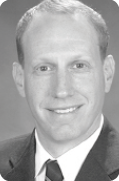
One of the most satisfying aspects of our profession is the ability to communicate intelligently and fairly with each other regarding technology, outcomes, and patient care. Besides FDA study data and peer-reviewed literature, many of our decisions about and preferences for the delivery of medical and surgical care depend greatly on not only our own personal experiences, but also the valued opinions or our colleagues and mentors. For this reason, many of us go to meetings and stay in constant contact with our fellow surgeons via email, chat rooms, and blogs.
These communication tools are great to promote learning and the sharing of opinions, experiences, and information; however, there can be a dark side to this form of collaboration. Many of us have witnessed soapbox surgeons who profess their opinions and, in an almost fanatical fashion, criticize and condemn other surgeons in an open forum for their actions or preferences. Unfortunately, these exchanges often take place in a medium with a permanent written record, such as an email.
This recently became obvious to me in a group email that is usually congenial, educational, and thoughtful. In this case, however, several surgeons derailed into a combative and offensive written exchange about a new technology. The banter was shocking as I read it; I envisioned what our patients might think, not just about these doctors but also about our entire industry and profession. The clashing proponents and opponents of the technology used terminology such as hoodwinked, quackery, illegal, crutch, and self-delusional. Someone even used the word experimental to describe a technology that has been used successfully in practices around the world.
These surgeons, with a lack of respect for each other and an inability to see the potential risks of the digital footprints they were leaving, raged on for days. Sprinkled among the email responses were some voices of reason, calling the conversation back to a more collegial, respectful, and tolerant viewpoint; however, the discussion continued to dive deeper into offensive postures.
It is extremely healthy for colleagues to debate merits and shortcomings as new technologies come into the marketplace, but to make accusations and condemnations of fellow surgeons for their surgical preferences is outright wrong, in my opinion. Extremists cast a negative light on our entire profession. If these types of comments were disseminated to the general public, it could lead to a complete loss of faith in our subspecialty and negatively affect us all.
In grade school, children are now taught about the potential pitfalls of the digital footprints they create and the caution they must take when posting things in the digital space. Perhaps we need a course at a major convention that addresses this very subject; it could serve as a primer for surgeons to understand how to communicate effectively, tolerantly, and productively, especially when there is an opportunity for many other eyes to view what is written.
It is interesting how history tends to repeat itself. Many years ago, similar heated debates took place during the advent of IOLs, and again when phacoemulsification was introduced, when foldable lenses debuted, and when sutureless clear corneal incisions gained traction. Even LASIK was considered ludicrous by some corneal surgeons when it was first performed. Innovators of these and other techniques and technologies were ostracized, but, eventually, the ivory towers collapsed.
These milestones heralded changes in dogma and paradigm shifts in standards of care, and they evoked strong feelings on both sides of the fence. When disruptive technologies come into our hands, it is only natural for there to be extremes on both sides, but how we communicate and come to a consensus on these technologies is often more important than the snapshot of when the technology was initially evaluated and debated.
The fact that there can be so much debate and such extreme perspectives around a particular new device or procedure is validation that there may indeed be a sea change pending. Let us all try to be cognizant of the gift we have been given in any new technology, keep an open eye to the possibilities of the future, and be tolerant of each other as we allow our colleagues to practice the art of medicine and retain their own individual preferences on how they deliver care.
Robert J. Weinstock, MD | Chief Medical Editor




